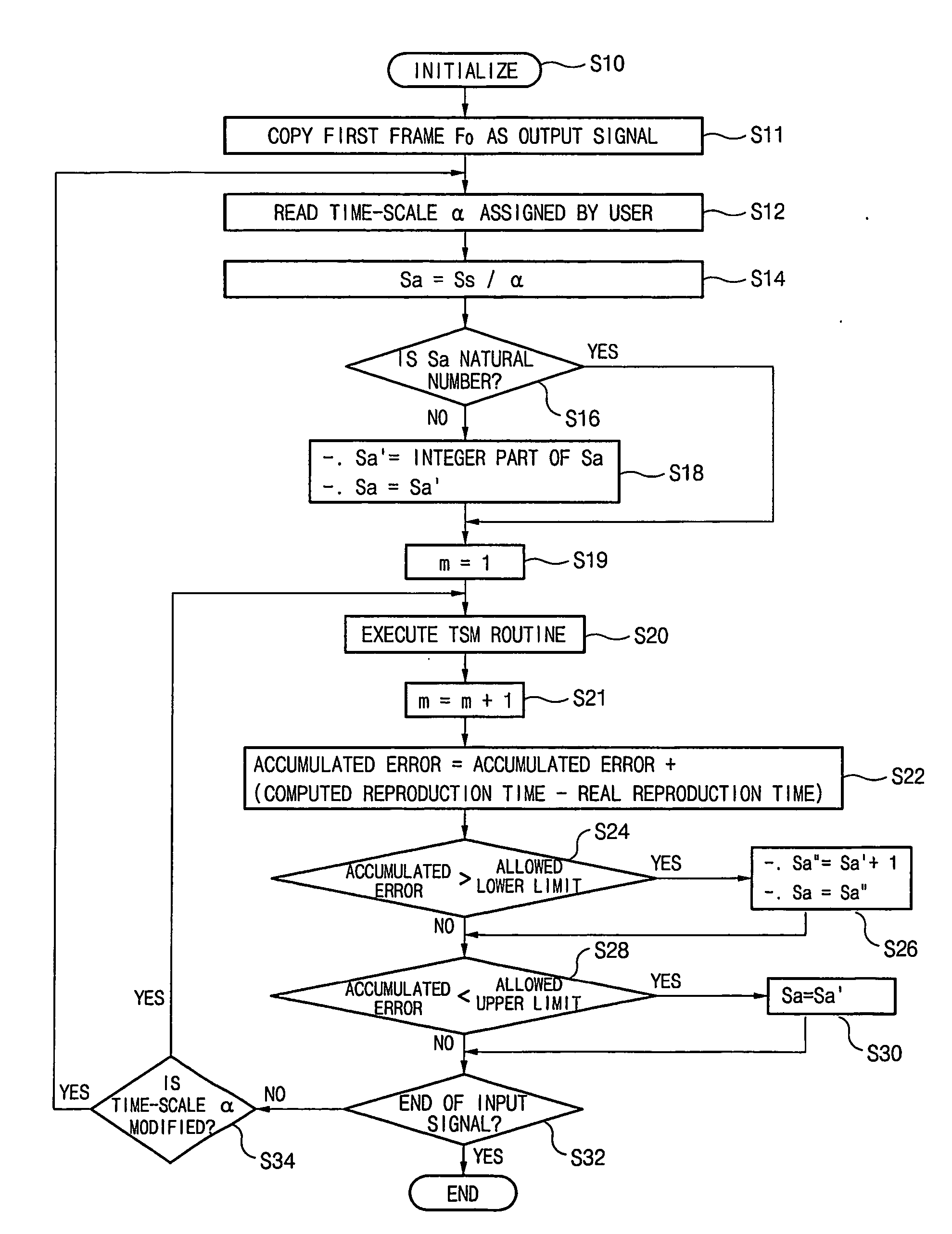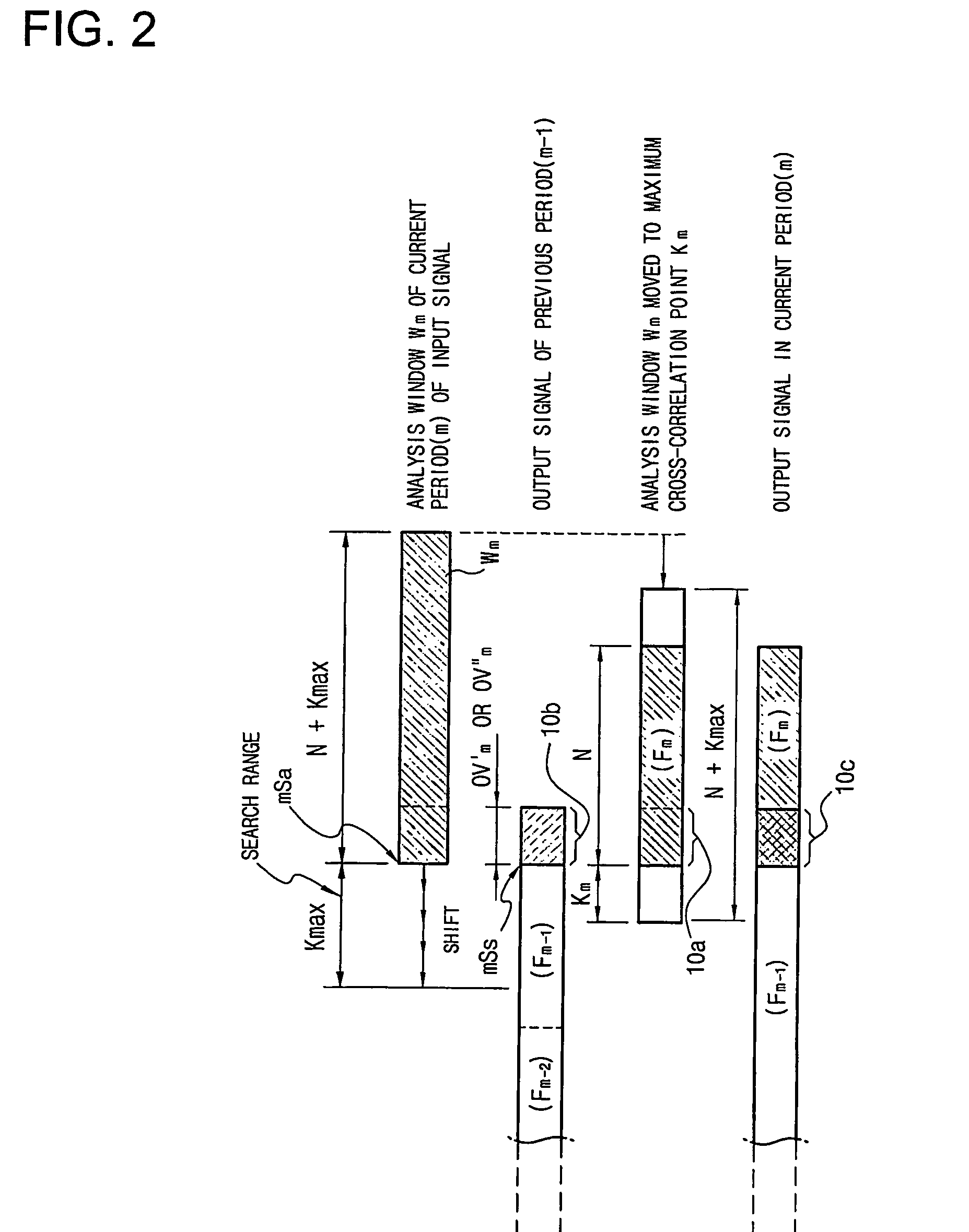Time-scale modification method for digital audio signal and digital audio/video signal, and variable speed reproducing method of digital television signal by using the same method
a time-scale modification and digital audio technology, applied in the field of time-scale modification of digital audio signals, can solve the problems of accumulating reproduction time errors caused by the difference between the analysis interval sa and the modified analysis interval sa′, accumulating reproduction time errors as much as the difference, and achieving the effect of less load
- Summary
- Abstract
- Description
- Claims
- Application Information
AI Technical Summary
Benefits of technology
Problems solved by technology
Method used
Image
Examples
Embodiment Construction
[0047] Hereafter, the preferred embodiments of the present invention will be explained in detail with reference to the accompanying drawings.
[0048] Before describing the invention, the TSM processing of an audio signal will be explained below for clear understanding of the invention. FIG. 1 is a diagram explaining the principle of the TSM method for a digital audio signal. The TSM method adopted by the invention segments the audio sample stream of an input signal into a plurality of overlapping analysis windows, converts the length of the overlapping area into a length corresponding to a requested time-scale, and synthesizes the overlapping area by applying a weighting factor. The TSM processing generally comprises an analysis step and a synthesis step.
[0049] In the analysis step, the digital audio signal sample stream shown in FIG. 1(a) is segmented into a plurality of continuous analysis windows Wm shown in FIG. 1(b). Here, the m is a natural number starting from one (1), and re...
PUM
 Login to View More
Login to View More Abstract
Description
Claims
Application Information
 Login to View More
Login to View More - R&D
- Intellectual Property
- Life Sciences
- Materials
- Tech Scout
- Unparalleled Data Quality
- Higher Quality Content
- 60% Fewer Hallucinations
Browse by: Latest US Patents, China's latest patents, Technical Efficacy Thesaurus, Application Domain, Technology Topic, Popular Technical Reports.
© 2025 PatSnap. All rights reserved.Legal|Privacy policy|Modern Slavery Act Transparency Statement|Sitemap|About US| Contact US: help@patsnap.com



